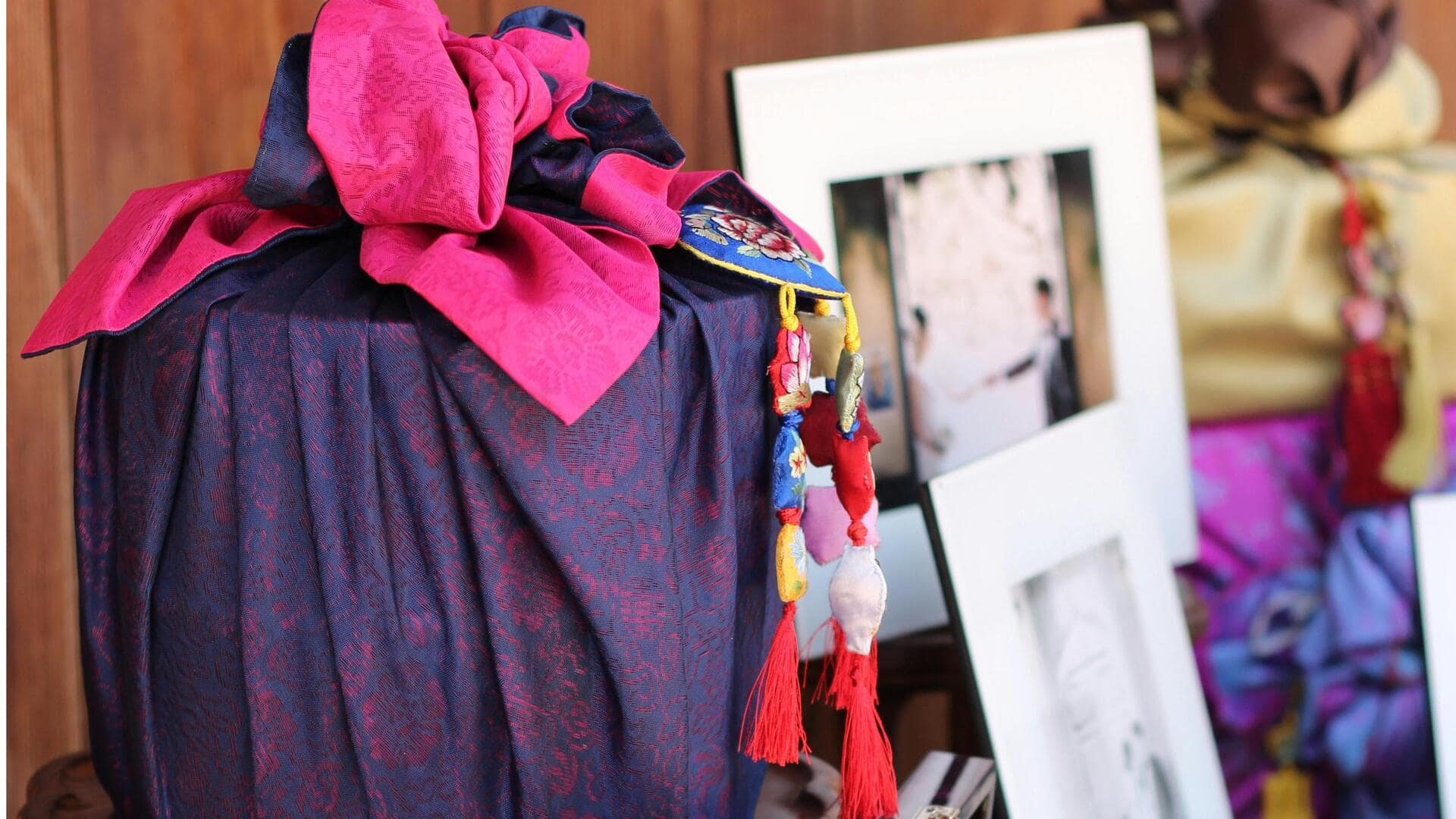
Why Korean bojagi is more than just gift wrapping
What's the story
Korean bojagi is a traditional wrapping technique that has been practiced for centuries. It involves using a square piece of cloth to wrap gifts, making it both practical and artistic. The art of bojagi not only serves the purpose of wrapping but also adds cultural significance to the gift-giving process. With its vibrant colors and intricate patterns, bojagi is a unique way to present gifts with elegance and thoughtfulness.
#1
Historical significance of bojagi
Bojagi dates back to the Three Kingdoms period (57 BC-668 AD) in Korea. It was used by royalty and commoners alike for various purposes, such as wrapping clothes or carrying belongings. Over time, bojagi evolved into an art form with specific techniques and designs that reflect Korean heritage. Its historical significance lies in its representation of Korean culture and tradition through generations.
#2
Techniques involved in bojagi
The art of bojagi involves several techniques such as patchwork, embroidery, and dyeing. Each technique adds a unique touch to the final product. Patchwork involves sewing together different pieces of fabric to create intricate patterns, while embroidery adds decorative elements using thread. Dyeing techniques like natural dyeing with plants are also commonly used to achieve vibrant colors.
#3
Modern adaptations of bojagi
In recent years, bojagi has seen modern adaptations beyond traditional uses. Designers incorporate bojagi into fashion accessories like scarves or bags, while some use it as an interior design element by framing pieces or using them as wall hangings. These adaptations keep the art alive while introducing it to new audiences who appreciate its beauty.
#4
Cultural impact on gift-giving traditions
The cultural impact of bojagi on gift-giving traditions is profound. In Korea, wrapping gifts with bojagi is considered more thoughtful than using paper because it symbolizes wrapping up good wishes for the recipient. This practice emphasizes sustainability by reducing waste compared to conventional paper wrapping methods.